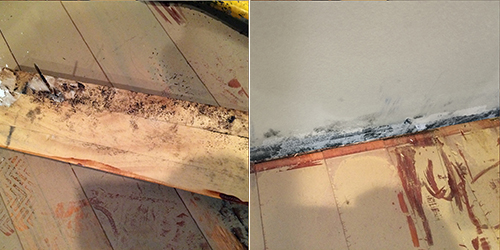Exactly How to Help Prevent Water Damage in Your Bathroom
Exactly How to Help Prevent Water Damage in Your Bathroom
Blog Article
Everyone has got their private piece of advice on the subject of How to Repair and Prevent Bathroom Water Damage.

The bathroom is very vulnerable for damp buildup as well as possible water damage because of the frequent use of water in it. This post offers simple evaluation strategies to help finding water damages hazards.
The regular use water in the bathroom makes it incredibly at risk for moist build-up and also potential water damage. By examining it consistently, you can lower water relevant damages.
The complying with collection of evaluations is simple to execute and must be done as soon as in every three months in order to maintain your washroom healthy and to stop potential water damages brought on by the bathtub, the shower, pipe joints and also plumbing, sinks, cabinets, as well as the bathroom
Do not neglect carrying out these assessments and be detailed while executing them. Remember that these simple inspections can save you a lot of money by offering early indications for water damage
Tub as well as Shower
The shower as well as tub call for unique focus and also upkeep. Examine the floor tiles and also change if fractured. See to it that there is no missing out on cement in between the floor tiles. Evaluate and also change fractured caulking at joints where the wall surfaces satisfy the floor or the tub. Blocked drains as well as pipes problems will prevent the bathtub from drying and also might show severe issues underneath the tub. Speak with a professional immediately to prevent structural damages. Take notice of stainings or soft locations around the tub walls as they may show an inner leakage.
Plumbing
Signs for water damage are hard to detect given that a lot of pipes are installed inside the walls.
Pay unique interest to flooring and wall surfaces dampness as well as discolorations as they might suggest an unnoticeable plumbing problem. Examine dampness levels in adjacent spaces as well.
Sinks and Cabinets
Sinks and also cupboards are subjected to moisture and also humidity everyday and are often forgotten. Check frequently under the sink and on the kitchen counter over it. Repair any kind of drip in the catch as it may recommend drain problems. Browse the sink, slow draining pipelines may show an obstructed drain. Change sink seals if they are broken or loosened.
The Bathroom
The commode is a prone water junction. Examine the water lines as well as look for leaks around the commode seat, in the pipe, and also under the water tank. If you identify any type of signs of wetness on the floor around the bathroom, check for leakages in the toilet edge and container seals.
Be aware that hanging bathroom dish deodorants boosts the opportunities for clogs.
Water Damage Signs In The Bathroom To Avoid Cleanup
Musty smell
This is one of the easiest signs to catch because musty smells are so odorous. The damp, earthy, moldy smell should be a big red flag. The smell will develop when moisture gets trapped in surfaces, and begins to facilitate mold growth. Leaking pipes under cabinets, inside walls, and behind shower fixtures will cause moisture to stay trapped and not dry, which will lead to mold growth and spread. As soon as you notice any musty smells in your bathroom, have it checked for hidden water damage and cleanup signs.
Visible mold
If the smell isn’t there to give it away, sometimes you will actually see mold growth. Finding mold in your bathroom is a serious problem, because mold is very harmful to your health. By the time mold growth is visible, it also means that water damage has already occurred and been present for some time. The only way the mold problem can be resolved is to find the source of the moisture and get it stopped. To safely and adequately remove mold, you need to have professionals handle the remediation. Do not waste any time in getting mold problems addressed, fixed, and sanitized so that you can protect you and your family from the many respiratory symptoms caused by mold exposure.
Damaged floors
Bathroom floors should be able to withstand some exposure to water while still remaining in good condition. However, when excess exposure or water leaks occur, they will begin to damage even the most water-resistant flooring. If you notice any cracking, bubbling, staining, or warping on your bathroom floors, there is probably a water leak somewhere causing the distortion. If you notice areas of the floor have become softer, or even have a spongy feeling, there is probably damage to the subfloor. Subflooring is typically made up of plywood. When plywood is exposed to water or moisture, it will absorb it. Once it has become saturated, the weight of the excess water will cause the wood to swell and soften. Check the floors in your bathroom frequently to catch any of these sings before they lead to damaged subflooring.
Changes on walls
When water leaks behind walls, it will cause changes in the drywall. Peeling plaster, blistering paint, and soggy wallpaper are all good indicators that excess water is building up behind the wall. Water leaking behind drywall will cause it to swell and be soft to the tough. If you start to notice gaps along the trim of your walls, or where tile meets the wall, it could also be a strong indicator that there is a leak behind the wall. Any changes, distortion, or damage on the walls should be evaluated as soon as you notice it to prevent further water damage and cleanup.

As a keen reader on How to Repair and Prevent Bathroom Water Damage, I thought sharing that article post was important. Sharing is good. Helping others is fun. Thanks a lot for going through it.
Visit Site Report this page